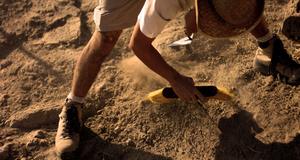From Earth Common Journal VOL. 3 NO. 1Hoarding Plastic Waste: Buried AliveRecycling: The Virtue of Repurpose and the Vice of LimitationWith an estimated 13.4 million tonnes of garbage produced yearly by Canadians it is not surprising many are choosing to recycle in an attempt to reduce the waste that is being put into landfills as well as conserve natural resources (Babooram & Wang, 2008, para. 3). Recycling is gaining popularity as a method of dealing with garbage, and according to Statistics Canada “households across the country sent nearly 3.6 million tonnes of materials for recycling in 2004, an increase of 65% compared to 2000” (Babooram & Wang, 2008, para. 3). In an effort to reduce the amount of plastic waste in our landfills, many municipalities have recycling facilities to turn plastic and other recyclable materials into a useable substance once the plastic is gathered and put through a cleaning process (Clemente, 2008, para. 3). The numerous resins used to make plastic each behave differently during the recycling process. The characteristics of individual polymers prevent them from being successfully recycled when mixed with other polymers. Plastic is separated at the recycling facility to ensure the quality of the product (Clemente, 2008, para. 4). Many plastic producers code the plastic with a number to symbolize the type of resin for easy sorting (APRA, 2013, para. 4) The plastics are then shredded into pellets or melted to create one mixture (Clemente, 2008, para. 4). Using recycled plastic to produce useful new products requires less energy and fewer resources than producing new plastics for these manufactured goods (APRA, 2013, para. 2), and although it does not stop the production of new plastic, it does reduce it to a degree. In addition, recycling also supports the economy. According to Edmonton.ca (2013), over 90 percent of the material collected for recycling is sold (para. 1) to companies that produce goods ranging from vehicle parts to coffee cups, and plastic “bags can be recycled into plastic ‘lumber,’ planters for gardening, new plastic bags, and other products” (SPi, 2012, para. 3). However, regardless of the expanding market for recycled plastic, Edmonton’s mega-recycling facility is an exception (APRA, 2013, para. 3, 4). Many other Canadian cities, including Edmonton’s southern neighbor, Calgary, accept and recycle fewer types of plastic. In fact, “Calgarians joke that the easiest way to recycle mixed plastics is to stash them in the trunk next time you make a trip to Edmonton” (“Plastics: How to,” 2008, para. 7). Other Canadian cities have equally poor reputations for recycling. In 2008, “some recycling agencies in Montreal were found guilty of giving away their potential recycled waste to city dumps and landfills” (Clemente, 2008, para. 1) In Ontario, 55 percent of recyclable waste goes to the landfills (Campbell & Dharmarajah, 2011, para. 7). The majority of recycling facilities across North America only process resin codes one and two, and “in Canada, less than 40 percent of those are recycled” (Ian Connacher, 2008, ch. 5). Not only do recycling facilities fall short, but, according to Statistics Canada, limited access to convenient recycling facilities reduces the chance that Canadian’s will recycle. People who live in single detached homes are more likely to have access to recycling services than those living in mobile homes or apartments (Babooram & Wang, 2008, para. 4). Nevertheless, plastic manufacturers continue to promote the recyclability of their product in an effort to increase sales (Ecology Centre, n.d., para. 2). The Alberta Recycling Plastics Association is closely affiliated with Canadian Plastic Industry Association (Canadian Plastics Industry Association, 2013, para. 1) because promoting plastic packages to seem more environmentally friendly leads consumers to feel comfortable buying more plastic products (Ecology Centre, n.d., para. 1, 2). But the truth is, of the “approximately 31 million tonnes of garbage Canadians generate each year, only about 30 percent of that material is recycled” (Recycling Council of British Columbia, n.d., para. 1).Continued on Next Page » Suggested Reading from Inquiries Journal
Inquiries Journal provides undergraduate and graduate students around the world a platform for the wide dissemination of academic work over a range of core disciplines. Representing the work of students from hundreds of institutions around the globe, Inquiries Journal's large database of academic articles is completely free. Learn more | Blog | Submit Latest in Environmental Studies |

















